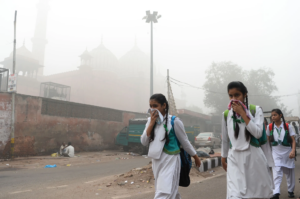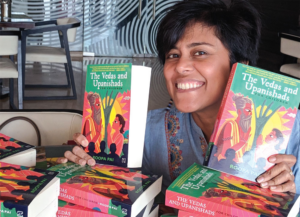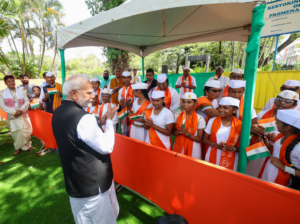The Scoop India
It was the end of September when the clash once again begins between the two former soviet union countries- Armenia and Azerbaijan over the disputed Nagorno-Karabakh region. Let me tell you that this Nagorno-Karabakh region is a part of Azerbaijan, but ethnically, its population is majorly Armenian. Armenia is majority Christian while Azerbaijan is majority Muslim.
The conflict sparked when the people of the Nagorno-Karabakh region voted to become a part of Armenia controlled by separatist Armenians backed by the Armenian Government. The bloody war resulted in the killing of thousands of people, extensively damaging and displacing many others.
In this battle, after controlling the city of Shusha, Azerbaijan definitely get an edge. Meantime, Russia intervened and negotiated a peace agreement between the two countries and sent peace forces to Stepanakert, the capital and the largest city of the self-proclaimed Republic of Artsakh in Azerbaijan. Earlier it was believed that Turkey is controlling the game by giving open support to Azerbaijan. But strategically Russia started the peace talk initiative. Armenia, Azerbaijan and Russia’s respective leaders met online and arrived at a nine-point agreement to end the conflict in Nagorno-Karabakh. However, it seems as if the battle is over and peace is stored, but the continuous clashes, flare ups are still raising many questions because this is not either the first or even the last war between the two countries.
Actually Armenia and Azerbaijan were liberated between 1918 and 1921. Even at the time of independence, there was no special friendship between the two countries due to the border dispute. After the end of the First World War, one third portion from these two countries separated which is now known as Georgia. In 1922, these three countries joined the Soviet Union. During that time, Russia’s leader Joseph Stalin gave the part of Nagorno-Karabakh to Azerbaijan and the decision was taken without local deliberations. Most of the population of that area is ethnically Armenian who was appealing since decades to hand over this area to Armenia, felt discontent with this decision. Moreover, the discontent was further strengthened when Azerbaijani authorities tried to culturally de-armenize the region by planned azari settlements, squeezing armeni population and neglecting their economic needs. In 1980s, when the disintegration of the Soviet Union began and the question of Nagorno-Karabakh region re-emerged and through a referendum the people of Nagorno-Karabakh officially voted to make itself the part of Armenia. It led to the beginning and eventually intensification of direct clashed between the Azar and Armenian inter-ethnic conflict killing, wounding and migrating many.
The hills of the Caucasus region in southeastern Europe are considered to be strategically important. Armenia is majority Christian while Azerbaijan is majority Muslim. For centuries, the Muslim and Christian forces of the area have wanted to establish their dominion over them. During the war that lasted from the late 1980s to the 1990s, more than 30 thousand people were killed and more than 1 million people were displaced.
In 1991, again a referendum took place, which again supported the creation of independent state. However, the soviet proposal of increased autonomy in the region statisfied neither side and subsequently led to the eruption of war between Armenia backed Nagorno-Karabakh region and Azerbaijan.
In 1994, Armenian forces took control of 20% territory of Azerbaijan and at that stage the Government of Azerbaijan for the first time during the conflict recognised Nagorno-Karabakh as a third party of the war and started direct negotiations with the Karabakhi authorities. Then unofficial ceasefire was reached through Russian Negotiation and the matter appeared to become quiet, but Azerbaijan did not let the desire die that one day it would again capture Karabakh. In 2016, 110 people were killed in the violence. In July this year, 16 people were killed.
Now here comes the role of Turkey and its President Ardogan. Ardogan, who for the last several years, hangs in every quarrel in the world, he also ignited the animosity of these two countries. Ardogan supported Azerbaijan and said that he will help Azerbaijan everywhere. In July, Turkey’s support was also considered behind the war-like demonstrations. Turkey is openly supporting the Muslim-majority Azerbaijan and Russia is behind the Armenia. It means the fight is actually between the geo-political interests of Turkey and Russia under the pseudo cover of the fight between Azerbaijan and Armenia, which are now the puppets of these major powers.
If seen, there is not the war which began today or even in last 100 years because when looking into the past, the history of war will be found very old. So old that it will take us back a thousand years when these countries were not even in existence. The new generation might see the war as a routine thing but the story behind this war is hidden in the time when the followers of Islam, which started in the seventh century, had taken away the holy sites of the Christian community and the Jewish community. There have been about seven major wars fought between them to regain those territories. These are called Salibi War, Christian Crusade, Crusade or Crush War. Historians consider them seven such cruises i.e. crucifixion. By the way, it started around the year 1095. A very simple description of these stories is given in the Hollywood movie, Sessions of the Witch, about how the Vatican popes were establishing an empire in the name of God and the Arab Muslims in the name of Allah.
At one time this region was part of the empire of Rome whose rulers became Christians in the fourth century. But in the seventh century, a fierce attack by Islamists followed by the successor Caliphs of the Prophet destroyed the culture of their surroundings and then established their rule over distant countries. This situation changed in the 11th century when Pop’s army and the Prophet’s army had a direct confrontation with the cross in their hand. The First Crusade War lasted three years from 1096 to 1099. The Christian army reached Jerusalem in 1099 with a cross in hand and won.
The Second Crusade War took place nearly 48 years later. In 1144, the Ottoman ruler of Mosle, Imaduddin Jangi seized Edessa from the Christian ruler. For this, the Pope was requested for help and by the order of Pop, the famous monk Saint Bernard preached this war of religion. The story of the war which lasted from 1147 to 1149 is a bit long but this war was absolutely unsuccessful. As a result of this war was Turkey emerged as a powerful empire under the leadership of Sultan Salauddin, who occupied Egypt in North Africa, Palestine in Western Asia, Syria, Arabia, Iran and Iraq. He captured the Christian king of Jerusalem in 1187 in the Battle of Hattin and took possession of Jerusalem. After this, the Third Crusade War started which lasted from 1188 to 1192 and the lose-win kept occurred between the troops and finally the treaty took place.
The Fourth Crusade War also started under the leadership of Pope Innocent III which lasted from 1202 to 1204. But after this there was also a dangerous war in which there were only children. In 1212, a farmer named Staphan from France who announced that he had been sent by God to defeat the Muslims and they would be defeated by the children only. Thus the Children’s Crusade was created, 30,000 children including boys and girls were mostly under 12 years of age and for this work in seven ships were sailed from Marseille, Southern Monkey of France. Two ships were sunk along with all the passengers in the sea, the remaining passengers were sold as slaves in Alexandria. In the same year, another group raised another team of 20,000 children in Germany and they took them to Jana aah, many of them died while traveling through the mountains.
The Fifth Crusade took place in 1228–29. The Emperor Frederick II made a treaty with the ruler of Egypt, seizing Jerusalem, Bethlehem, Nazruth, Taur, and Sidan, their surrounding areas and the main places of the Holy Land, and placed them on the throne of Jerusalem.
A few years later, the sixth war began, and Jerusalem was again taken back away by Muslims. Jalaluddin, the Khwarzamshah who was the ruler of Khoba, went west after defeating Chaghez Khan and took Jerusalem and destroyed the holy places and killed the inhabitants. This is how the seventh crusade war took place.
The recent fight broke in July this year on the international border between Armenia and Azerbaijan, some 300km (185 miles) away from Nagorno-Karabakh. By the end of the month Turkey’s military was taking part in large-scale joint exercises in Azerbaijan.The latest conflict broke out on 27 September. Armenia said Azerbaijan fired the first shots. Azerbaijan said it was launching a “counter-offensive” in response to Armenian aggression.
Fighting came to an end in November when both sides agreed to sign a Russian-brokered peace deal. Under its terms, Azerbaijan holds on to several areas that it gained control of during the conflict and Armenia will withdraw troops from them. Almost 2,000 Russian peacekeepers will monitor the truce. For the time being, the peace forces of Russia will separate the forces of both sides and will ensure that the fight does not start again. The Russian military will also secure a five-kilometer-wide corridor connecting the Armenians of Nagorno-Karabakh to the main Armenia. But it is not clear how the rule of the Armenian-controlled Karabakh will operate in the future.









More Stories
Why are right-wing parties winning the European Union elections?
Why is the weather pattern changing in countries around the world?
Pakistan Retaliatory Strikes In Iran, Day After Warning of “Consequences”